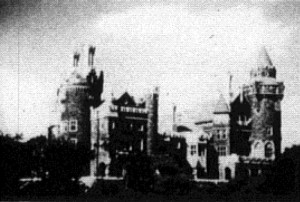"considering the obvious difficulty of getting anywhere near the subject to be photographed, is an amazing piece of work, as regards photography, choice of shots, continuity, cutting, and editing. It is no exaggeration to say that a professional could have done no better. The whole grim business of the fight is depicted in a vivid and realistic manner, and but for the fact that the Censor and general public are averse to witnessing spectacles of this type of picture, if enlarged to standard size, could be shown in the cinemas" (Hill 1931: 7).
"The Bystander is a study of a young, apparently bashful fellow who studies other boys and girls having a good time and imagines just what they might do as they pair off and trundle out into the night. He, himself, cannot muster the courage to join them" PSA Journal, Sept. 1966, 35.

"A young girl and an Australian terrier named Frisco are the ingredients of Calling Frisco, a sound on film story in which the speech is mostly from the dog's point of view. The film flows smoothly through typical scenes of a day's activities of eating and going to market and playing, ending in a dramatic climax in which Frisco protects his young mistress by warning off an intruder. Imaginative viewpoints and pleasant interior lighting are employed throughout. The dog's simple tricks are well pictured without being obtrusive, while the scene in which a bouncing ball lands in a goldfish tank, with its accompanying sound track, has the creative fantasy of Disney. Cyril Stevens has made a jolly film. " Movie Makers, Dec. 1948, 493.
"Item is a film of Dr. Willinsky's trip to the Canary Islands with his wife, Sadie. In the form of a travelogue, music and Dr. Willinsky's commentary accompanies footage of the landscape, architecture, and local population. Included are shots of the local population carrying out their daily activities, children dressed in costume for Ash Wednesday festivities, markets, and traditional dances. Sadie is occassionally spotted sight-seeing and visiting with locals." Ontario Jewish Archives.
"Charles and Robert Coles showed a fine knowledge of the use of filters in their twin subject, 'Cascade and World's Fair.' Also they showed a grasp of composition and camera angles that was refreshing." American Cinematographer, Dec. 1933, 342.

"Casa Loma (house on a hill) was built by Sir Henry Pellat in Toronto. The design includes many of the things he admired in the castles of Europe. Much of the interior was imported. In this magnificence, Sir Henry lived until he could no longer afford the mounting city taxes. Out filmer takes us through this old castle that we may relive some of its greatness. The picture was made for the Kiwanis Club which was so active in reclaiming Casa Loma for Toronto" PSA Journal, Oct. 1961, 47-48.

"Mother is tired and catnaps while junior is at play. Soon junior takes his teddy bear and goes exploring the park, highway, and railroad. There are automobiles and trains to spark anxious moments. When Mother awakens, the young man has returned from his venture. A dream, perhaps" PSA Journal, Nov. 1960, 41.
"Film opens with a shot of a camera and projector. Following scenes include family footage of two girls dancing in a garden; shots of a birdbox, beehive and female beekeeper; snowy street scenes; a child playing with a lamb; women participating in an outdoor gymnastic display and brief footage of a cricket match at Ashley." (NWFA Online Database)

Kodachrome travelogue showing life and culture in Guatemala and Panama.
"Among the ten best, Century of Progress, in Kodacolor, by Herbert H. Johnson, ACL, is a striking illustration of the degree of perfection that color motion picture photography has attained. Its studied angles and dignified composition are augmented by excellent photography. Mr. Johnson paid careful attention to the very important point of exact exposure in relation to color value and, as a result, brought a new version of the Fair to the one who had never seen it in color before. By taking plenty of time he was able to single out the best camera positions and wait for the lighting that was most favorable. The excellent handling of the camera brought a sense of intimacy to each scene. The film's only fault is an excessive use of lap dissolves which detracted somewhat from the smoothness of the continuity." Movie Makers, Dec. 1933, 499.
Total Pages: 39